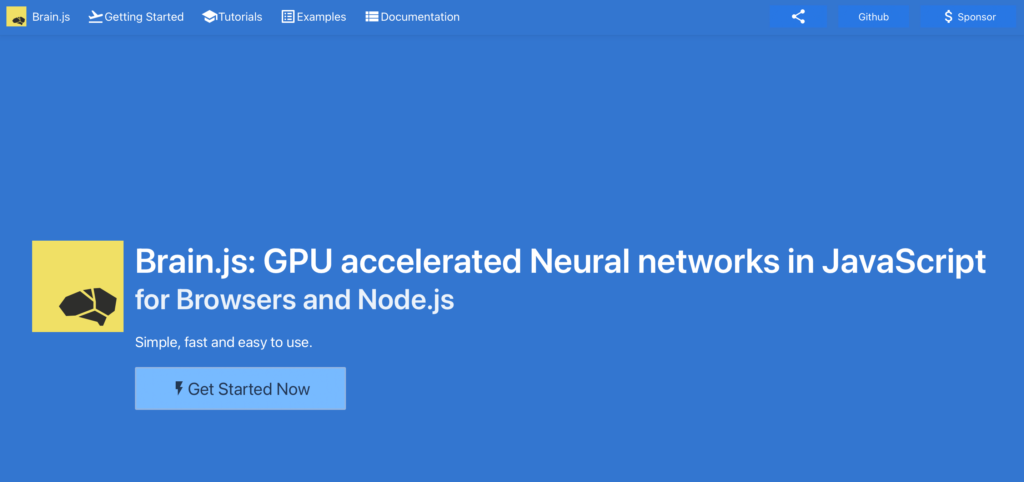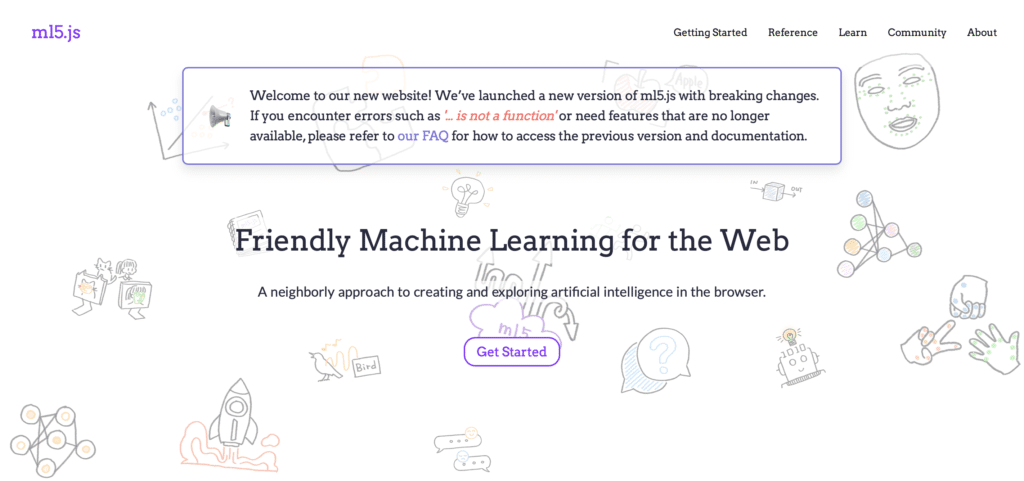
Unveiling the Power of JavaScript in Machine Learning
It is remarkable how machine learning has escalated to be one of the most important technologies of digital era. It enables the organizations to make informed decisions, innovate and automate processes in different sectors. In the past, machine learning was largely the domain of programming languages such as R and Python, at this time JavaScript is become very effective in implementing machine learning applications. In this blog post, the intersection between JavaScript in machine learning will be examined, including its advantages, libraries, frameworks and practical usage.
What is Machine Learning?
Machine learning, a branch of artificial intelligence (AI) that empowers algorithms to adapt through experience, is a process in which algorithms are trained to detect patterns and accomplish certain tasks. These algorithms have been trained on historical data, and so they can forecast events, categorize data, and even extract particulars that are not immediately apparent. Several industries deploy machine learning such as medical, banking, advertisement and many others.
Why Use JavaScript in Machine Learning?
JavaScripts as a programming language has been associated with web development, but its application in ML is increasing on the account of several factors:
- Ubiquity: It is known that JavaScript is the most popular programming language and is supported by most web browsers. Thus, it is the best fit to be used for machine learning applications that are intended to be used and implemented easily.
- Interactivity: Creating interactive web applications is one of the things that javascript does best. This therefore easily fits into the machine learning paradigm that allows data processing and visualization on the fly.
- Ecosystem: The javascript ecosystem within itself is very extensive and with the aid of other machine learning tasks, it has an array of libraries and frameworks available within its scope.
- Community Support: With a huge number of developers comes an active and engaged community which means that there will be no shortage of resources, guides and help for anyone willing to explore machine learning options using JavaScript.
Key JavaScript Machine Learning Libraries and Frameworks
There are also a number of JavaScript machine learning libraries and frameworks. Some of the most popular are:
TensorFlow.js

TensorFlow.js is a Google-developed JavaScript library that helps to create, train, and work with ML models right in the web browser or Node.js environment. The package extends JavaScript capabilities by enabling the integration of TensorFlow – one of the most powerful machine learning libraries.
Features:
- Can perform model inference with pre-trained models as well as allows training of new custom models.
- WebGL has measure hardware acceleration.
- Integration with React and Angular and other Javascript libraries.
Brain.js

Brain.js is an efficient JavaScript library that is stable, easy, and versatile with neural networks language interface. It is for novices in the field, demonstrating how to use neural networks in the browser and Node.js in a tackily simple manner.
Features:
- Allows building multiple neural network constructs.
- Offers easily understood API.
- Ideal for accomplishing machine learning undertakings ranging from small to medium scale.
Synaptic

Synaptic provides a set of JavaScript frameworks to enable the frameworks programming in simple neural networks. It has a modular and extensible structure making it publishable for different varieties of machine-learning systems.
Features:
- Provides exciting and numerous API for numpy like deep learning constructs.
- Supports network visualization and analysis design and deployment tools.
- Integrate quite well with other employed JavaScript libraries.
ml5.js

ml5.js becomes a comprehensive framework that focuses on the usability that is based on TensorFlow.js. The goal is to broaden the reach of machine learning by offering a greater number of users models that are available and APIs that simple using.
Features:
- lm5.js provides many valuable facilities utilizing machine learning and its basic target users.
- Image classification, text classification and other activities by trained models.
- Using p5.js ml5.js integrates easily for creative coding.
Being one of the most efficient programming languages today, Javascript has a multitude of practical applications of machine learning in JavaScript. Some examples are as follows:
Real-Time Image Evaluation
Using Tensorflow.js and ml5.js libraries, one can create web applications featuring real-time recognition. For instance, such a software application can perform analysis within images or videos appearing from a user’s webcam capturing images or video sequences.
Natural Language Processing, or NLP
JavaScript can be employed for NLP activities, such as emotion analysis, written text categorization, or text processing in several languages. Pretrained models are included in libraries including Tensorflow.js, and such models can be adjusted for certain NLP areas.
Data Visualisation
Due to JavaScript’s exceptional strength in developing interactive web applications, this language is also great for data visualization related to machine learning outcomes. Machine learning models could be enhanced utilizing D3.js, Chart.js libraries to display complex and informative graphics data seamlessly using machine algorithms.
Recommendation Systems
JavaScript can also be employed delivering recommendation systems that advise products, content or services to users basing on their activities and habits. The advantage of these systems is that they operate on machine learning algorithms and thus provide personalized recommendations enhancing user experience.
Practical Example: Image Classification with TensorFlow.js
let’s walk through a simple example of image classification using TensorFlow.js. We’ll build a web application that can classify images using a pre-trained model.
Step 1: Setting Up the Project
Create a new directory for your project and navigate into it. Initialize a new Node.js project:
mkdir tfjs-image-classification
cd tfjs-image-classification
npm init -yInstall TensorFlow.js and other dependencies:
npm install @tensorflow/tfjs @tensorflow-models/mobilenetStep 2: Creating the HTML File
Create an index.html file and add the following code:
<!DOCTYPE html>
<html lang="en">
<head>
<meta charset="UTF-8">
<meta name="viewport" content="width=device-width, initial-scale=1.0">
<title>Image Classification with TensorFlow.js</title>
<script src="https://cdn.jsdelivr.net/npm/@tensorflow/tfjs"></script>
<script src="https://cdn.jsdelivr.net/npm/@tensorflow-models/mobilenet"></script>
</head>
<body>
<h1>Image Classification with TensorFlow.js</h1>
<input type="file" id="image-upload" accept="image/*">
<div id="result"></div>
<script>
async function classifyImage() {
const imageUpload = document.getElementById('image-upload');
const resultDiv = document.getElementById('result');
imageUpload.addEventListener('change', async (event) => {
const file = event.target.files[0];
const image = document.createElement('img');
image.src = URL.createObjectURL(file);
image.onload = async () => {
const model = await mobilenet.load();
const predictions = await model.classify(image);
resultDiv.innerHTML = `
<h2>Predictions:</h2>
<ul>
${predictions.map(p => `<li>${p.className} - ${p.probability.toFixed(2)}</li>`).join('')}
</ul>
`;
};
});
}
classifyImage();
</script>
</body>
</html> Step 3: Running the Application
Open the index.html file in your browser. You should see an interface with an image upload input. Select an image, and the application will display the classification results using the MobileNet model.
Conclusion
JavaScript’s venture into the field of machine learning is paving a new horizon as far as developers are concerned. Its simplicity, real-time features and large ecosystem provide it with a great versatility as far as various applications are concerned. With the aid of powerful libraries or frameworks, machine intelligence can be integrated in the web browser or in a server in an as easy way as it gets. Regardless of your level – you are not a software developer for sure, you are an aspiring JavaScript machine learning developer. Welcome this synergy, use it, and grow new ideas!
